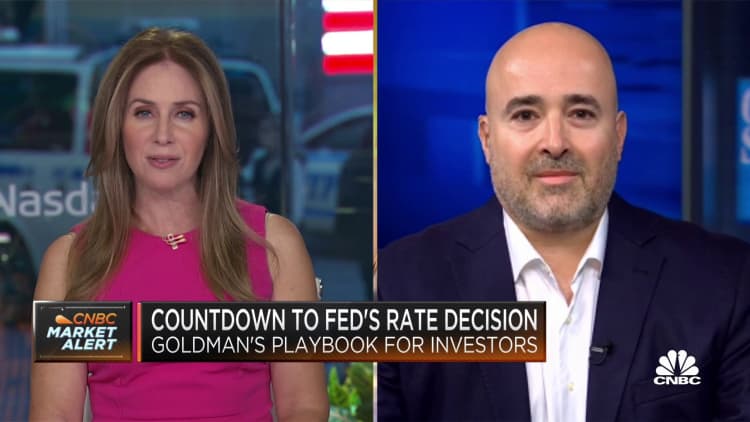After another 0.75 percentage interest rate hike from the Federal Reserve, financial experts have tips for investors amid volatility in the stock and bond markets.
Continuing to fight inflation, the central bank on Wednesday announced its fourth consecutive three-quarters of a percentage point interest rate increase.
The latest move comes after annual inflation rose more than expected in September, climbing by 8.2% on a 12-month basis, according to the U.S. Department of Labor.
More from Personal Finance:
Series I bond to pay 6.89% annual rate for the next six months
Here's what the inverted yield curve means for your portfolio
Education Dept. overhauls federal student loan system to make it 'fairer'
The Fed's series of interest rate hikes have also affected government bond yields, creating a so-called inverted yield curve, which happens when shorter-term bonds have higher yields than bonds with longer maturities.
Following the Fed's decision, the policy-sensitive 2-year Treasury was around 4.468%, paying more than the 10-year Treasury at 3.986%.
While some experts believe certain yield curve inversions may forecast a future recession, financial advisors say the economic conditions may also provide timely options for investors.
"There are absolutely opportunities present with an inverted yield curve," said Andrew Fincher, a certified financial planner at VLP Financial Advisors in Vienna, Virginia.
There are absolutely opportunities present with an inverted yield curve.Andrew FincherFinancial Advisor at VLP Financial Advisors
He said the Fed's "aggressive policy" has caused a spike in short-term yields, which some investors are using as a place to "park cash" until volatility subsides.
Matthew Gelfand, a CFP and executive director of Tricolor Capital Advisors in Bethesda, Maryland, also pointed to higher yields for short-term bonds. As assets mature faster, investors can reinvest funds sooner to capture rising yields, he said.
Currently, "you're getting just as much yield with less volatility risk," with short-term assets, he said. The reason: longer-term bonds are more vulnerable to price changes as rates increase.
Of course, short-term bonds are less attractive as rates decline since you can't lock in the higher rate for a longer period. "There's always a trade-off," Gelfand said.

'Hope for the best, but plan for the worst' with future rate hikes
Jon Ulin, a CFP and CEO of Ulin & Co. Wealth Management in Boca Raton, Florida, has told clients to "hope for the best but plan for the worst" in case rates continue to climb through 2023.
If your portfolio's long-term bonds are down, it may be a "good time" to consider tax-loss harvesting — using losses to offset gains — and shifting to shorter-term bond allocations, Ulin suggested.
However, if interest rates begin to fall again in 2023, he plans to shift a portion of bond allocations back to intermediate or long-term maturities.





